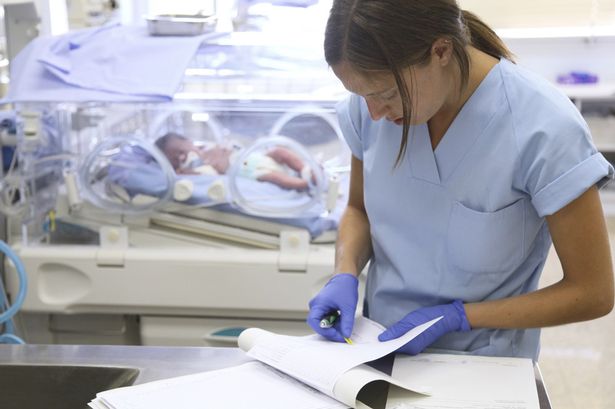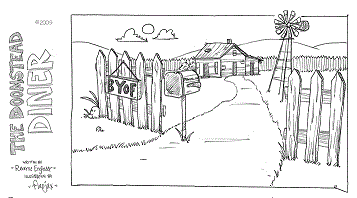 ”If you take a look at the average daily workload of an NHS nurse, you can see how it would drive any but the most committed to leave the underpaid and undervalued profession.
”If you take a look at the average daily workload of an NHS nurse, you can see how it would drive any but the most committed to leave the underpaid and undervalued profession.
Average staffing levels in NHS wards means that there are 9 patients per nurse. In elderly care wards the average is 11 patients per nurse. The reality for nurses is it can be as much as 10 or 12 patients per nurse on a medical ward, and 14 to 16 patients per nurse on an elderly ward. The National Institute of Clinical Excellent (NICE) and nursing unions recommend no more than 8 patients per nurse, yet 40% of NHS nurses reported to the Royal College of Nursing (RCN) that they are working with ratios higher than this.
Imagine you’re a nurse with a 12 hour shift. It’s meant to only be 11 hours work because you’re meant to have a one hour break (which you aren’t paid for) but you’ll probably end up working through it. You have 10 patients who you have to help wash, give their medications three times a day, and do a minimum of three sets of observations throughout the day. You also have wound dressings to change for several of your patients, and several need help toileting throughout the day. Some may be bed bound and require full double handed care, requiring another nurse to help you.
You also need to speak to the medical team for each of them to chase up their plans. Several need to be sent for scans, and you need to speak to the porters and x-ray, CT or ultrasound and get them sent down. Dementia patients or those who are falls risk can require an escort so you have to find someone to go with them.
If you’re on a surgical ward you will have a couple of patients on Patient Controlled Analgesia, or epidurals needing hourly monitoring, as well as observations hourly for those returning from theatre, hourly sliding scales for diabetes patients, Naso-Gastric or Total Parenteral Nutrition feeds needing checking and monitoring. Alongside that you’re trying to safely take multiple patients to theatres and radiology which means being off ward for ages, while somehow simultaneously closely monitoring the patients you’ve left behind.
Desperately trying to free up beds
On top of that you will be managing multiple discharges to get patients home to free up beds for the next day’s intake of patients awaiting surgery, and chasing pharmacy for medications. There is barely any time to carry out the essential work of teaching patients about managing new stomas or controlling their diabetes or any of the other essential parts of patient education which are left in the hands of overstretched nursing staff.
God forbid any of the patients become acutely unwell. Then you have to drop everything and spend 2-3 hours managing them intensively, calling the medical or surgical team, the clinical response team, maybe the crash team if they suffer a peri-arrest. Performing observations every 15-30 minutes, administering IVs, taking bloods, deciding whether to inform the next of kin if it’s a serious deterioration or if they are elderly or at the end of life. If you eventually stabilise them you have to go back and catch up on your work for your other 9 patients, who you haven’t been able to do anything for in the meantime.
A study in Australia found that on a busy ward, nurses were making roughly 200 decisions every hour regarding their work. You spend all day every day running from task to task, with barely any time to think.
Documenting everything – even when it was done badly
On top of all this you have to find time to document everything about those ten patients; those three sets of observations (as a minimum, more if they become acutely ill), at least one detailed nursing care plan and a follow up note at the end of the shift, noting every time someone was repositioned, every bowel movement, every aspect of personal care, wound care, important conversations you had with the medical team, with patients, their relatives or social services.
There aren’t enough staff to do all the work, but the hospital still requires you to document everything you did to prove you did if (even though it was probably done badly or in a hurry, or maybe not at all).
If there were enough staff to do all the work, this level of documentation wouldn’t be necessary. With inadequate levels of staffing, it just become an onerous imposition, and saps what little spare time you have.
By the end of your shift if you work flat out, skip your breaks, cut a few corners and don’t spend too much time doing any of the niceties for patients (the little chats, extra cups of tea, comforting them if they’ve had bad news, and so on) you might have just about managed to do all your care and provided decent, if a little basic care for your patients.
If you have managed to squeeze in most of your documentation you might only leave 30-40 minutes late as you tidy up the last bits of paperwork, check you’ve done all your notes, updated all the care plans, fluid balances, stool charts, repositioning charts and the rest. But if someone became really unwell and you spent 2-3 hours nursing them intensively, you’ll probably be staying behind an hour or two to finish notes, as the only time you’ve really got to work on them is when the next shift has arrived and they can take over all your responsibilities.
How the ‘market’ intensifies nurses workloads
The effects of years of austerity on hospital budgets, combined with the market mechanisms which allocate NHS funding, are also driving the workload up for nurses. Hospitals receive a payment (a tariff) per patient admission. Hospitals facing budget restrictions and reductions in bed numbers are utilising medical and surgical advancements to improve patient care, but also to minimise time as inpatients. This is done to maximise through flow of patients so they can receive as many tariff payments and maximise their income at times of budget restrictions. They do this so they can afford to pay staff and continue to maintain services, but it drives up nurses workload to an unprecedented level. Whereas 15-20 years ago patients would stay on wards for weeks at a time till they were full recovered, now it’s common for patients to be discharged home as soon as they are stable and not acutely unwell, the remainder of their care being carried out in the community.
Whereas a nurse used to have a mix of acutely unwell patients, and stable recovering patients requiring minimal care, now every patient a nurse cares for is likely to be acutely unwell, meaning their care needs and the workload for the nurse is at maximum every shift. Such a situation creates a horrendous work environment where nurses work flat out all the time, with no downtime or quiet days. It accelerates burnout, and means newly qualified nurses trying to find their feet and develop their skills and resilience are subject to unimaginable pressures and levels of responsibility that they would not have faced 10-15 years ago.
This is why nurses are leaving, and until it changes, they won’t stop leaving.
The simple solution
The only way to improve retention and begin to reverse the outflow of nurses from the NHS is to reduce their workloads to a safe, manageable level. This means more nursing staff on wards and in community services.
There is a remarkably simple policy solution to this which has worked well in other countries; mandatory minimum safe staffing levels, enforced in law. This has been implemented in both Australia and California, in response to concerted protests by nurses and their unions.
There is a consensus for this across nursing unions and the nursing workforce. The RCN, UNISON and Unite all call for mandatory minimum safe staffing levels across NHS wards, and surveys of nurses show 90% in favour.
What is stopping the government adoption of this policy is the impediment it would pose to cutting and privatising the NHS, and the demand it would create for increased funding to pay for the staffing. But it is absolutely necessary if we are going to see the continued functioning of the NHS, and the survival of nursing as a viable profession. For this reason all nurses and their unions have to become more active and aggressive in campaigning on this issue, for the wellbeing of ourselves, our patients and the NHS.”
Thanks to NHA Party for the link.































